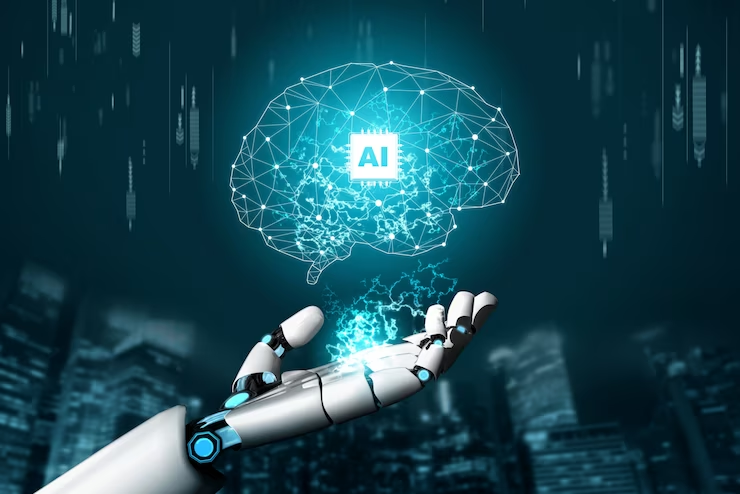

By Haley Holmes
Aug 24, 2023
Table Of Contents
Introduction
Artificial Intelligence (AI) and Machine Learning (ML) are terms commonly used but often misunderstood. In this blog post, we will explore the concepts of AI and ML and their relationship. We will also discuss the application of AI in the medical field and its impact on healthcare providers.
Understanding AI and ML
Artificial intelligence, commonly known as AI, is a computer system that can make decisions and perform tasks that typically require human intelligence. It encompasses various capabilities, such as recognizing speech patterns or facial expressions and making appropriate responses. Voice-activated assistants like Siri, Alexa, and Google Assistant are prime examples of AI applications.
Machine learning (ML) is a subset of AI and can be categorized into supervised learning and unsupervised learning. In supervised learning, a computer program learns from data provided by humans to predict outcomes. For instance, a machine may be trained to identify cats in photos based on features like fur color or face shape. On the other hand, unsupervised learning involves programs that explore data without human input. Neural networks, a type of machine-learning algorithm, might be employed in unsupervised learning to analyze brain scans and identify common patterns among different patients with Alzheimer's disease.
Artificial Intelligence (AI) and Machine Learning (ML) are rapidly advancing technologies that have a profound impact on various industries. AI involves the use of computers to perform tasks that typically require human intelligence, such as pattern recognition and natural language processing. On the other hand, ML enables computers to learn from data and enhance their performance over time. In essence, AI and ML are subsets of computer science focused on enabling computers to function like humans. AI is centered on decision-making based on programmed input and behavior, while ML emphasizes learning from data and recognizing patterns through trial-and-error processes. These technologies find applications across multiple fields, including healthcare, finance, manufacturing, and logistics. AI is revolutionizing drug development and disease diagnosis, while ML is improving supply chain management and optimizing stock portfolios. The future of AI and ML is incredibly promising, and their continuous evolution is set to revolutionize various industries in the years ahead.
Differentiating AI and ML
AI stands for Artificial Intelligence and encompasses computer systems that exhibit human-like intelligence. ML, on the other hand, is a subset of AI that focuses on computers learning from experience without explicit programming. While the terms are often used interchangeably, ML has gained popularity for tasks traditionally performed by humans.
AI And ML In Healthcare
Artificial intelligence (AI) and machine learning (ML) are increasingly making a significant impact in healthcare. These technologies are expected to play a vital role in disease diagnosis, patient outcome predictions, treatment planning, and drug development in the future. The use of AI in medical scribing is gaining popularity due to its ability to expedite processes and improve accuracy. Various user-friendly software programs are available for this purpose. AI refers to technology that can be programmed to perform tasks requiring human intelligence, such as responding to voice commands and adapting to different situations. In healthcare, AI can assist physicians in prescribing medications more efficiently and identifying cancer cells. ML, a subset of AI, utilizes algorithms to learn from data and improve its performance over time. The impact of AI on healthcare, particularly in addressing physician burnout, has sparked debates. While technology can aid in combating burnout, it must align with the humanistic goals of medicine. Medical scribe software is seen as a potential solution as it can enhance efficiency without disrupting workflow or patient care compared to traditional in-person scribes.
Why Do We Need AI In Healthcare?
The pressure of EHR documentation has been a significant burden on doctors, leading to burnout and even some leaving the medical profession. According to a study published in the Journal of Medical Internet Research, administrative hassles were cited as the reason for leaving by 53% of physicians who quit their practices. To address these challenges, Artificial Intelligence (AI) and machine learning (ML) are being leveraged to enhance the efficiency of medical scribe software. AI enables the software to perform tasks without human intervention, such as gathering patient information, accessing previous records, and scheduling appointments. On the other hand, ML's potential for data analysis proves valuable in the medical field. By using ML algorithms, scribes can identify trends in data more quickly than before, saving time and effort.
The integration of AI and ML into medical scribe software not only boosts efficiency but also reduces error rates, improving overall workflow and easing the burden on physicians. This technological advancement is expected to alleviate the tedious and time-consuming process of EHR documentation, providing doctors with more time to focus on patient care and reducing the likelihood of burnout.
Impact Of AI Medical Scribe On Physician Burnout
The implementation of artificial intelligence (AI) in medical scribing has demonstrated its effectiveness in reducing physician documentation burnout. A comprehensive study involving over 200 physicians revealed that those utilizing AI-assisted medical scribing experienced a significant decrease in documentation burnout compared to those without AI assistance. This technology streamlines the documentation process, allowing physicians to devote more time to patient care. Moreover, AI-assisted medical scribing enhances the accuracy of documentation, reducing the need for physician corrections and revisions. By automating routine tasks, AI medical scribe software alleviates the burden on physicians, enabling them to focus on more critical aspects of their practice. This increase in efficiency contributes to a reduction in burnout rates among doctors. AI medical scribe software proves to be a promising tool in tackling physician burnout. It provides much-needed support to overworked physicians, allowing them to allocate more time to patient care and challenging cases that require their personal attention. As this technology continues to advance, it has the potential to revolutionize medical scribing and positively impact the well-being of healthcare providers.
Conclusion
By automating routine tasks, doctors' time is freed up for higher-level responsibilities, ultimately leading to increased productivity and more direct patient contact. The emergence of AI in the medical field marks the beginning of a transformative era that will impact various aspects of our lives and interactions. For those eager to embrace this exciting new era, now is the perfect time to delve into learning more about the possibilities AI can offer in revolutionizing healthcare and medical practice.

Please fill out this form.
We will reach out to you within 24 hours

Haley Holmes

Haley Holmes

Documentation is an important daily clinical responsibility. In order to optimize patient care, physicians are always on the lookout for new ways to effectively and efficiently document patient visits.
The use of virtual medical scribes has become increasingly popular in the recent years, as medical practices across the country are on the constant lookout for ways to reduce clinical documentation overload, thereby improving overall productivity.
The clerical burden associated with EHR usage is attributed as the number one cause of physician burnout. We also know that physicians spend twice as much time on EHRs and other clerical tasks compared to the time providing patient care.